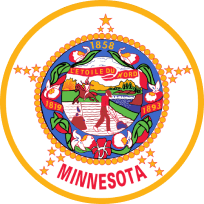
A serious risk to Minnesota workers is losing their hearing or vision due to work-related injuries.
Work-related vision and hearing loss is specifically addressed by Minnesota Workers’ Compensation law.
It is a problem that affects hundreds of Minnesota workers every year.
The loss of vision or hearing can be caused by a specific traumatic incident, or these injuries can be caused by long-term exposure at your place of employment.
For example, workplace hearing loss is often caused by long-term, unprotected exposure to loud noises that you’d find in a production facility.
The Minnesota workers’ comp lawyers at Arechigo & Stokka understand what it takes to fight for the rights of our clients to receive workers’ comp benefits when they suffer from work-related vision and hearing loss.
In 2020, Minnesota had 76,700 workers with non-fatal work-related injuries. So injuries at work are quite common, and most employees do not know what to do when injured. That’s where we come in.
We have spent decades successfully representing injured workers in Minnesota and ensuring the workers’ comp insurance companies and employers do what is right for their injured workers.
We are here to answer your questions and make sure you’re being treated fairly.
Common Causes of Vision Loss at Work
Eye injuries at work that cause vision loss don’t happen often, but they can occur in most industries.
Work-related eye injuries are not just limited to a particular type of job or industry. Injuries to the eye that would affect a worker’s vision can happen in any job.
Here are some common causes of work-related vision loss that we see in our Minnesota workers’ comp practice:
- Debris flying about the workplace and striking a worker’s eye, such as pieces of glass, wood, or metal;
- Tiny particles floating in the air, such as dust and other material that contaminates the eye;
- Radiation or excessive exposure to light;
- Fire or sparks striking the face and burning the eyes;
- Chemicals, either in liquid or gas form, that cause chemical burns to the eye; and
- Heavy objects that strike the face and eyes, damaging the physical structure of the eyeball; and
- Automobile accidents that cause damage to the physical structure of the eye and perhaps permanent blindness.
Some work-related eye injuries cause only temporary blindness or limited sight.
With those types of injuries, where a person can see over time after the injuries heal, workers will be compensated for wage loss benefits for the time they couldn’t work due to their vision problems.
But the workers with permanent loss of vision are treated differently.
Common Causes of Work-Related Hearing Loss
Hearing loss is more common in certain industries, unlike vision loss that could happen in any type of job.
In most instances, physical damage to the inner ear due to a traumatic event at work is fairly rare, although it does happen.
The most common causes of work-related hearing loss include the following:
- Constant, prolonged exposure to loud noises;
- Head injuries causing traumatic brain injuries (TBI) that affect a person’s ability to hear; and
- Being subjected to a single, loud noise such as an explosion.
By far, the most common cause of hearing loss is prolonged exposure to loud noise at work. This most often occurs in production plants or construction sites, for example.
Of course, these injuries are found at worksites that do not enforce hearing protection.
Minnesota Work-Related Vision Loss Benefits
If an employee has completely lost sight in both eyes due to a work accident, then they would receive permanent total disability (PTD) benefits.
The PTD rate is two-thirds of an employee’s gross weekly wage at the time of the injury, subject to a yearly adjusted maximum weekly compensation rate.
PTD benefits will be paid until the employee turns 72 years old. PTD benefits are usually offset by Social Security Disability Benefits after an initial $25,000 in PTD has been paid.
Therefore, at some point, the injured worker will usually be forced to file for Social Security Disability benefits.
Minnesota Work-Related Hearing Loss Benefits
For work-related hearing loss claims, the maximum disability of the whole body is 35 percent if the worker loses almost all hearing ability in both ears.
If a person loses partial hearing in either one or both ears, then the percent of whole-body disability will be between zero and 35 percent.
The amount of hearing loss has to be established by a medical professional with a specialty focused on hearing loss.
The final evaluation and medical opinion must be at least three months after the day of the injury to ensure that the hearing loss is permanent.
Many factors go into the medical opinion, including noise exposure, hearing protection used, and documented past hearing loss.
Even if you have had documented hearing loss in the past, you can still receive worker’s compensation from your new job if you have at least a documented 10 percent loss in hearing after working in the environment.
Contact a Minnesota Workers’ Comp Lawyer For Help
If you have suffered a work-related eye injury or hearing loss, you don’t have to go through this alone.
Get your questions answered by knowledgeable and skilled Minnesota workers’ comp attorneys.
At Arechigo & Stokka, we have been successfully fighting for the rights of injured Minnesota workers for decades.
Contact our office today for a free initial consultation.



